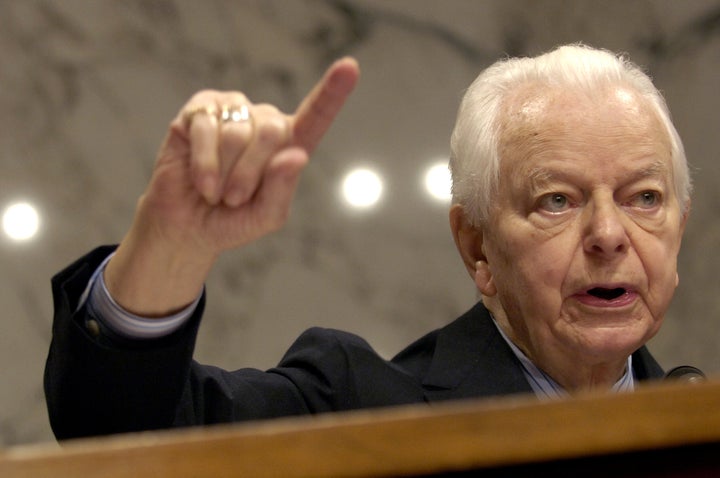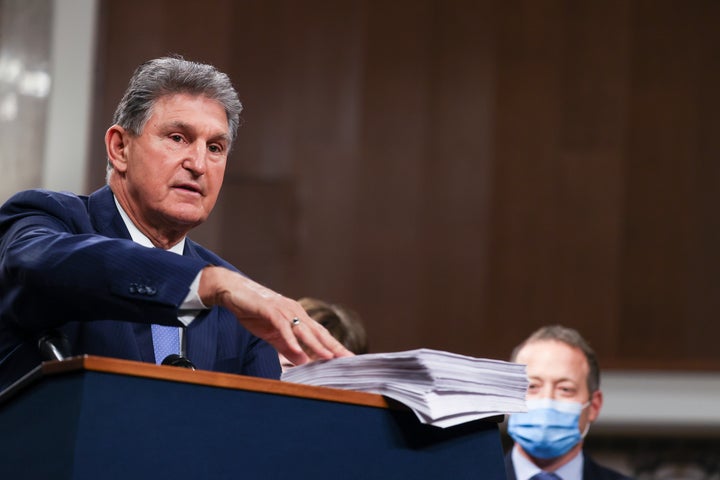[ad_1]
The political outlook for President-elect Joseph Biden’s first term changed dramatically this week when victory in two Georgia special elections gave Democrats 50 senators. With Vice President-elect Kamala Harris available to decide tie votes, the result means that Democrats will have control of the chamber.
For the first time in a decade, a Democratic Congress will be able to pass laws that a Democratic president can sign. And although Senate Republicans can still wield the filibuster, which requires 60 votes to overcome, Democrats can approve bills through “reconciliation,” under which legislation can pass the Senate with a simple majority vote.
In principle, Democrats can enact a significant portion of their agenda that way. One reason is that reconciliation is tied to the budget process, and Congress never actually passed a budget last year. The new Congress could take advantage of that by quickly passing a reconciliation bill for the current fiscal year, still leaving opportunities to pass reconciliation bills for fiscal 2022 and 2023.
That’s not even the full extent of legislation Democrats could possibly pass, thanks to an obscure provision of the budget process that seems to allow for “revisions” to previous reconciliation bills within the same fiscal year.
And it could all happen before the next midterms, when the Republicans will have their first chance to recapture one or both houses of Congress.
But reconciliation is a notoriously cumbersome and complex process, because of interlocking rules on what legislation can and cannot include. And although it’s possible to alter those rules or challenge interpretations of them, doing so usually requires a series of votes from the full Senate ― and, in the best of scenarios, the assent of at least 50 senators.
In a practical sense, then, the ultimate limit on what Democrats can do through reconciliation isn’t so much process as it is politics ― specifically, the ability of Democratic leaders like House Speaker Nancy Pelosi (Calif.) and incoming Senate Majority Leader Charles Schumer (N.Y.) to keep their caucuses united.
How Reconciliation Works And How It Has Evolved
Reconciliation dates back to the 1970s, a time when Congress worked a lot differently than it does now. There were two budget resolutions a year, not one, and the original purpose of reconciliation was to adjust revenue or spending bills in order to reconcile them with the overall budget plan.
“Part of why the procedures are expedited … is because the reconciliation bill was originally imagined to come between the adoption of the second budget resolution, on Sept. 15 and the start of the new fiscal year, on Oct. 1,” Molly Reynolds, a senior fellow at the Brookings Institution, explained to HuffPost.
Not long afterward, Congress shifted to one budget resolution a year. But it kept reconciliation as a way to keep revenue and spending in line with the overall budget ― and to do so quickly, without the risk of delaying tactics like the filibuster.
That opportunity has become a lot more valuable in the past two decades, because of broader changes in American politics and the way they have distorted the lawmaking process. Use of the filibuster has soared; the two parties have grown more internally homogeneous, geographically and ideologically, making compromise more difficult.

In this highly polarized environment, reconciliation is the only way to pass many pieces of legislation.
But for legislation to pass through reconciliation, every provision must satisfy certain conditions, including several put in place by the late Robert Byrd, a Democratic senator from West Virginia who was concerned lawmakers were using reconciliation for uses too far removed from its original purpose of putting government finances in order.
Under the “Byrd Rule,” every provision of a reconciliation bill must have a direct, nonincidental impact on government finances. And the bill as a whole may not result in higher deficits once the congressional budgeting window is over. (These days, Congress uses a 10-year window, so that rule means a reconciliation bill can’t lead to higher deficits at any point after 10 years.)
Reconciliation bills must comply with some other rules Congress has set for itself, including “pay-go” requirements that require offsetting new spending with cuts or revenue, and they are subject to narrower rules like a prohibition on changes to Social Security. Historically, reconciliation has only changed “mandatory” spending, which refers to entitlements like Medicare and other programs that don’t depend on time-limited appropriations.
The details and implications of these interactions are so complex that even veteran Capitol Hill aides will concede they don’t understand them fully, deferring to experts and scholars who focus on congressional procedure and the budget process. And virtually every rule has its exceptions and caveats. One example: Reconciliation guidelines don’t explicitly prohibit changes to nonmandatory spending, several experts told HuffPost, and in principle Congress could make such changes if it wishes.
Two famous uses of reconciliation in modern American history were at the hands of Republicans, which used the process to pass tax cuts in 2001 under President George W. Bush and again in 2017 under President Donald Trump. In each case, Republicans had to use accounting gimmicks and to make key policy concessions ― in particular, having tax cuts end automatically after 10 years ― in order to satisfy the requirement that bills not raise deficits outside the budget window.
The other high-profile use of reconciliation in recent history came in 2010, when Democrats used it to finish up their work on the Affordable Care Act. The main legislation passed the Senate through regular order, with 60 votes. But the House agreed to pass the bill, as written, only on the condition that the Senate pass an extra set of changes. That supplementary bill, which also nationalized the student loan industry, passed through reconciliation.
How Democrats Might Use Reconciliation Now
The 2010 reconciliation vote came after a year in which President Barack Obama and Democratic leaders in the Senate undertook exhaustive negotiations with Republicans, over not just health care but also an economic stimulus package and climate legislation. In fact, Democrats had deliberately kept reconciliation as a last resort for their health care bill, in the hopes they could get GOP buy-in.
It never happened, on health care or virtually any other bills. Republican leaders like Kentucky’s Mitch McConnell, then (and about to be again) the Senate minority leader, and Virginia Rep. Eric Cantor, then the House minority whip, admitted openly that their goal was to deny Obama and his allies the veneer of bipartisanship.
That remained the dominant Republican posture throughout Obama’s two terms, and when Republicans in 2017 seized full control of both the presidency and Congress, they didn’t even bother trying bipartisanship. They went right to passing legislation through reconciliation, using it for their tax cut and their ultimately failed attempt to repeal the Affordable Care Act.
Democrats seem to have learned a thing or two from that experience. They spent much of the 2020 campaign discussing how to pass legislation now that the filibuster has become a de facto supermajority requirement. Although a handful have said they would oppose ending the filibuster outright, nobody is squawking about the perils of reconciliation like many Democrats did in 2009 and 2010.
The questions are what parts of the Biden-Democratic agenda would make sense to push through reconciliation ― and then, when it makes sense to push them through.
Some parts of that agenda clearly wouldn’t fit under any close reading of the rules. The most obvious example would be a voting rights bill that, however worthy, would have only the most tenuous connection to government finances. Proposals that would fit more clearly under reconciliation guidelines include large swaths of Biden’s climate and health care agendas. Key elements of proposed COVID-19 relief measures, including the $2,000 relief checks, aid to state and local government and new vaccine funding, would likely fit easily into reconciliation as well.
The word “likely” is important because initial judgments on what violates the rules are left to the Senate parliamentarian, a nonpartisan appointee who rules on the permissibility of individual elements as a judge might ― by looking at precedent and considering the nature of individual proposals. (That process is frequently called a “Byrd bath,” because it’s connected to the Byrd rules.)
And even the parliamentarian’s word is not final. In practice, the way reconciliation debates work is that senators can raise objections to specific provisions, requiring rulings from the presiding officer, who typically follows the parliamentarian’s counsel. Rulings of the presiding officer are, in turn, subject to votes from the full Senate.
Even veteran congressional aides disagree a bit over what can and can’t happen during challenges, because that involves so many different rules about how budgeting works ― and, potentially, breaking traditional understandings of how Congress operates. But it’s at least possible that a simple majority could get its way on what ends up in a reconciliation bill, regardless of the parliamentarian’s judgment, if the will to do so exists.
“With 50-plus-one votes in the Senate, you can shape reconciliation in any way you want,” a former leadership aide now consulting with Democratic lawmakers told HuffPost.
Why It All Comes Down To Political Will
But that really just brings the whole debate back to where it started ― that in order to pass something through reconciliation, Democrats have to keep their caucuses together. That will be a difficult task, in the House as well as the Senate, because 2020 election losses left Democrats with a majority of roughly a dozen.
Friday produced a preview of the tricky politics, when The Washington Post reported that the most conservative member of the Democratic Senate caucus, Joe Manchin of West Virginia, was opposed to a new COVID-19 relief measure with $2,000 checks.
It’s more conservative Democrats like Manchin who are most likely to balk at ambitious reconciliation bills, because they typically involve spending a lot of money, increasing the size of government or, as in the case of COVID-19 checks, giving people money with no strings attached ― things that will run against the lawmakers’ own policy instincts, raise suspicions in the eyes of more conservative constituents, or both.

But after that report appeared, Manchin called back the Post to say that he was talking more about making vaccine funding a bigger priority and that he was not “absolutely opposed” to $2,000 checks. That could mean that even more conservative Democrats like Manchin recognize that the best way to win over voters is to show progress and enact policies that help struggling people in material ways, like speedily and simply making up for lost income during a pandemic.
If Manchin and similarly thinking senators can keep that in mind ― and if Democratic leaders, starting with Biden, can figure out the right way to package major legislation ― then there is real hope for major legislation in the next two years, and certainly more than seemed possible just a few days ago.
Calling all HuffPost superfans!
Sign up for membership to become a founding member and help shape HuffPost’s next chapter
[ad_2]
Source link